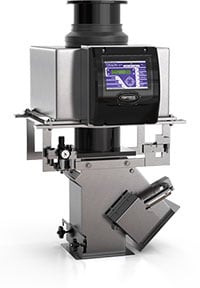 Preparing for a safety and performance audit requires preparation, thorough documentation and testing on behalf of manufacturers. In compliance with the Global Food Safety Initiative’s (GFSI) new production standards, it is important that manufacturers know and anticipate machine and system requirements prior to auditing, as this can save precious company time and resources, and limit instances of nonconformance with the audit review.
Preparing for a safety and performance audit requires preparation, thorough documentation and testing on behalf of manufacturers. In compliance with the Global Food Safety Initiative’s (GFSI) new production standards, it is important that manufacturers know and anticipate machine and system requirements prior to auditing, as this can save precious company time and resources, and limit instances of nonconformance with the audit review.
Here, we have outlined six requirements every manufacturer or production manager should be aware of when dealing with a GFSI audit.
1. Appropriate Testing Procedure
For a successful and conforming GFSI audit process of industrial metal detectors, such as those built by Fortress Technology, it is important for manufacturers to have an appropriate and effective self-testing system established. Successful production managers know to consider test sample sizes, frequencies, procedure steps and adequate record keeping when building a comprehensive testing system to prepare for metal detection audits.
As detector applications change with each operation and intended use, it is crucial for manufacturers to adjust their testing sample sizes to appropriately fit their detector; creating more suitable sample sizes requires manufacturers to determine the effect of the product being inspected, i.e. conductive or non conductive, aperture size, and types of metals to e scanned i.e., Ferrous, Nonferrous and Stainless steel. In regard to frequency, it is suggested that manufacturers establish a regulated and recurring testing schedule, with common testing intervals being after shift or product changes, or even hourly tests.
In addition, the testing procedure itself must be streamlined and condensed for effectiveness; a simplified testing procedure should take into account:
- Detector sensitivity and aperture centerline
- Activation of reject device
- Testing sample variation, including successive products, alternating products and different contaminant placements
- Proper recording of results
Appropriate test records should include date/time, samples used, detector ID, operator ID, pass/fail results and any corrective actions taken with failing samples.
2. Documentation and Performance Records
Successful manufacturers acknowledge that there are actually two major components of a GFSI audit: the physical inspection of the machinery and operation, and a documentation review. A detector’s performance records and testing history records are given equal review importance as the actual operation of the machine, so it is important for manufacturers to keep their records accurate and regularly updated.
Essentially, everything your metal detector does should be appropriately recorded, including product applications and changes in product, presence of contaminants and counter action, routine testing results, calibration certificates and service agreements, and internal audit records. An extensive and complete record library of your metal detector’s performance and history help manufacturers better prepare for GFSI audits.
3. Operator and Personnel Training
In addition to optimizing your detector and recording its test performance, it is important that all operators and personnel working with a detector be appropriately trained to safely handle the equipment. Proper training and knowledge of detection principles are required for both staff and management involved in a detector’s operation; even maintenance and equipment cleaning staff should be trained with and well informed about your company’s detector. All training records and relevant documentation should also be saved and catalogued for later audit review.
For manufacturers in production environments using metal detection technology, it is important to keep staff and equipment operators trained in:
- Standard testing procedures and data recording
- Processing of contaminated products
- Corrective action for failed tests and samples
- Critical Limit per product
- General documentation and testing references
4. Acceptable Equipment Condition
In preparation for the physical inspection of their production’s metal detector system, it is also essential for manufacturers to assess the general condition of their equipment. This includes identifying, documenting and taking action to improve equipment wear, belt degradation and equipment cleanliness/upkeep. Manufacturers with metal detectors in the production line suggest annual calibration of detectors be scheduled 2-6 months before GFSI audits, allowing to corrective maintenance and repairs to be completed by the time of the audit.
Regular maintenance and inspection of your detector can prepare you for auditing standards, and maintenance personnel must be properly trained in effectively working with the equipment. Before and after any repairs, it is important that thorough tests be performed to measure changes in detector performance, and records of these tests properly documented.
5. Additional Quality Testing
In extension of regular quality testing and machine calibration, it may be required for some manufacturers to integrate effective failsafe testing for ideal review. To better prepare for GFSI auditing, manufacturers often choose to test and document the performance of:
- Air pressure failures
- Reject confirm sensors
- Bin full and bin door sensors
- In-feed photo eyes
- Rejection timing
- Backup sensors
This additional testing generates a more comprehensive assessment of metal detectors, and provides manufacturers with greater and more complete performance documentation.
To further streamline and better use company resources, some manufacturers today choose to automate the metal detector testing process. Automated systems, compatible with ferrous, non-ferrous and stainless steel detection operations, limit the risks of human error and smooth production lines for optimal efficiency. Automated testing systems are practical for operation where access to a detector may prove difficult, or environmental conditions may make manual testing hazardous.
6. Pre- and Post-Audit Action Plans
It is also required of manufacturers to have detailed outlines and action plans ready for before and after GFSI auditing; a fully comprehensive plan will ideally prepare manufacturers for the auditing and testing process. Prior to an audit, it is essential for manufacturers to evaluate the performance of their detector’s reject system, sensitivity and contamination isolation. Any measures taken or changes made to optimize a detector prior to auditing should be clearly documented and reported.
Following an audit, it is incredibly beneficial for manufacturers to review their audit and testing documentation, and use this information to create an improvement plan for their detector. At this stage, corrective measures should be plotted out to prevent future non-conformances with GFSI standards, as well as measures to better existing processes.
Metal detection testing and inspection through the GFSI auditing process may be a grueling process, but appropriate preparation and evaluation of your detector can greatly improve your detector’s performance during auditing. All of this documentation, testing and reporting is worth the company effort, as the safety and quality performance of your detector is paramount in ensuring your product’s success.
To learn more about what GFSI audits analyze with your equipment, operating staff and performance history, or just wish to learn more about metal detection technology, contact us today.



